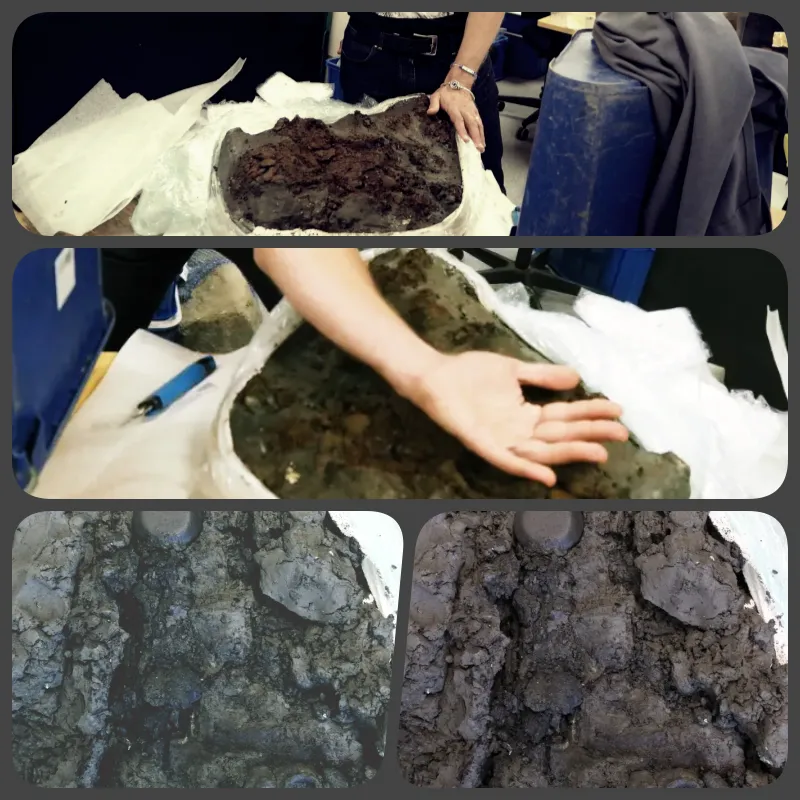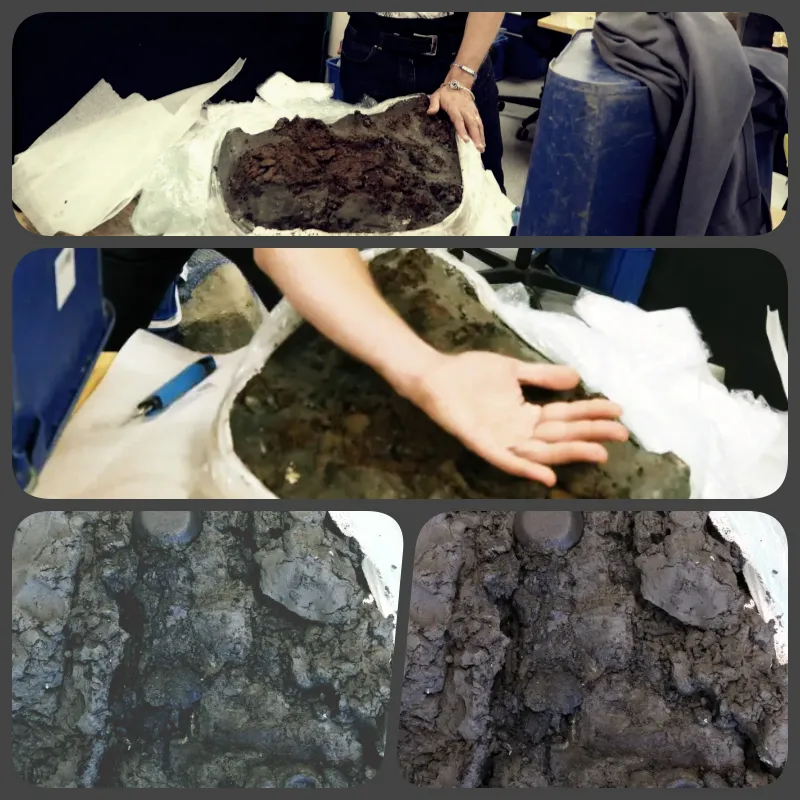
“In a remarkable underwater discovery, archaeologists in Norway have uncovered the remains of a medieval gauntlet from the seabed, raising intriguing questions about its origin and how it ended up lost underwater”
Archaeologists in Norway have made an extraordinary discovery on the seabed—what appears to be the remains of a medieval gauntlet. This find is particularly unique given the rarity and value of such an item in medieval times. According to the excavation’s project manager at the Norwegian Institute for Cultural Heritage Research (NIKU), the gauntlet is an exceptional artifact.
“This kind of gauntlet would never have been left lying around in medieval Oslo,” the project manager explains. “It was an incredibly expensive object, something an ordinary person could never afford. The fact that it was found on the seabed suggests it was either buried or lost, with no chance of retrieval.”
The discovery was triggered by a metal detector, which detected only a small part of the gauntlet. What remains is mostly an imprint, but it’s so well-preserved that it clearly shows remnants of iron plates or lamellae. The imprint’s clarity has led experts to conclude it must be a gauntlet.

Possible Link to Customs Controls
This isn’t the first time archaeologists have uncovered weapons or war artifacts in the harbor where the gauntlet was found. The project manager speculates that there may have been customs controls in the area during the medieval period.
“Confiscation of weapons has occurred in other parts of Europe, where customs officers would throw weapons into the sea or destroy them if they were of a certain length,” he says. The large number of weapons found in the harbor suggests they did not end up there by accident. “We’ve uncovered numerous daggers, as well as swords and axes. These aren’t items that people would simply lose. The sheer volume of weapons indicates a systematic disposal, likely for a specific reason.”
Additional Discoveries in the Fjord
Archaeologists have uncovered a variety of items at the bottom of the fjord, with some surviving the test of time better than others. For instance, one sword was detected solely because of its large bronze pommel; the rest of it had turned to rust, leaving only a fossil-like imprint.
Among the more macabre finds was a human upper arm bone, gnawed by dogs. The team is uncertain how it ended up there, but they speculate it could have been dragged from the execution site at Galgeberg.
Theories and Challenges
Determining the gauntlet’s origins and how it ended up underwater is challenging. One theory is that it might be related to customs practices, where war equipment could have been discarded in the sea. However, with limited documentation from the medieval period in Norway, it’s difficult to draw firm conclusions.
“Many Norwegian medieval documents were lost in a fire in Copenhagen in the 1700s, including the city law for Oslo. We haven’t found any regulations or documentation suggesting that items were thrown into the sea. All we have are the weapons we’ve uncovered,” says the project manager.
Preservation and Excavation
Interestingly, the seabed has provided a unique advantage in preserving these artifacts. Unlike land-based sites, where items can be crushed, kicked around, or repurposed over time, the seabed has kept these objects relatively intact. “On the seabed, everything stays where it falls, with layers of mud and waste building up over the centuries, preserving the items in neat strata,” the project manager explains.

An Ongoing Mystery
The mystery of how the gauntlet ended up in the sea remains unsolved. The project manager finds it difficult to believe that it was lost during a battle, especially since there were no human remains associated with it.
“If there had been anything else related to the gauntlet, we would’ve already found it. As much as we’d love to uncover evidence of historical battles in the fjord, it seems more likely that someone simply lost the gauntlet—perhaps a stroke of bad luck,” he concludes.






